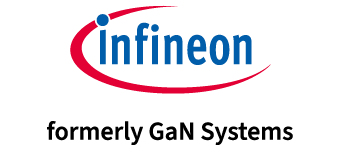GaN Is the Key to Unlocking Power Possibilities: Myths Dispelled!
Join us as we tackle misconceptions about gallium nitride (GaN) power semiconductors. We’ll dispel the mistaken belief that all wide bandgap (WBG) power semiconductors are the same. We will differentiate silicon-carbide (SiC) from GaN and highlight the benefits and opportunities of using GaN.
This is the third of four posts within the series, click here to access the others.
MYTH #3:
In The World Of Wide Bandgap, GaN And SiC Are The Same…
OVERVIEW:
- Today, there are two major Wide Bandgap (WBG) material platforms – GaN (gallium nitride) and SiC (silicon carbide) – which drive innovation in power semiconductors. Costs, performance and design opportunities are all factors in evaluating these materials.
- The differences between SiC and GaN helps determine which solution is more advantageous given diverse requirements such as voltages, performance capabilities and costs. Principally, for low and mid-range voltage requirements, GaN delivers more favorable results, while SiC is predominantly used for high voltage applications, greater than 1200V.
- Customers currently relying on SiC will need to move to GaN soon for two reasons: limited materials and rising costs to keep up with increasing power demand in industries ranging from data centers to automotive. Shifting to GaN now – they will save the need to shift from SiC to GaN later to catch up to their competition.
- 氮化镓系统 (GaN Systems) is providing customers more options with its robust and easy to manage solutions reducing the time to market compared to SiC. Among senior decision makers, there is an increased collective enthusiasm about the technology advancements in high-power density, high-efficiency power systems designed to meet the demands from important industry sectors– from automotive to consumer electronics to data centers to renewable energy.
INTRO:
The pursuit of power density and efficiency are the two most important forces driving innovation in numerous global industries today – including data centers, renewable energy, consumer electronics and EV and autonomous vehicles. The most mature and developed WBG semiconductor materials are GaN and SiC.
GaN stands out for the simple facts that it facilitates the fastest power switches in the world and delivers the greater power density and higher efficiency outputs than its predecessors. That increase in efficiency and power density has a score of benefits for consumers and enterprises alike, whether it’s a smaller form factor and a faster charging rate in consumer adapters or reductions in cooling costs and wasted energy for data centers.
The key criteria among C-level executives for choosing a system design is primarily how GaN or SiC increases competitive advantage, reduces OPEX and CAPEX, increases profits or increases market share. For years, silicon-based devices have been the baseline standard in the semiconductor world. Recently, GaN devices have made big moves in this landscape, elevated by their superior design and switching capabilities
FACT CHECK: SUPPLY CHAIN
- SiC semiconductors are more expensive and have supply chain limitations as compared to GaN. As the industry has proven time and time again, when volumes go up, prices come down. GaN prices can easily be projected to be competitive with Silicon over time, especially since GaN is produced on Silicon wafers.
- SiC semiconductors are in limited supply with a small number of suppliers and supply chain constraints which means that lead times of up to a year with some SiC suppliers are resulting in increasing costs. For example, SiC is not expected to meet the demand of electronic vehicle manufacturing in 2025 and beyond.
- While SiC is in short supply, the demand for GaN is rising with manufacturing and material costs declining. Automotive, industrial, and other applications that require smaller size, lighter weight, and more efficient operations are increasingly being designed with GaN.
- When it comes to production, GaN is “infinitely” scalable as it is made on the same silicon wafers with the same machines as billions of CMOS devices. This is not true for SiC. GaN will soon be capable of being on 8”, 12” and even 15” wafers, while SiC MOSFETS are typically only on 4” today and are migrating to 6” wafers.
FACT CHECK: TECHNOLOGY PERFORMANCE
- 氮化镓系统 (GaN Systems)’ first-generation devices outperform even the recent fifth generation SiC semiconductors. This performance gap is expected to widen with GaN performance growing 5-10 times in the near term.
- Systems built with GaN have greater power density improvement than SiC. With GaN, new power systems products in smaller sizes are emerging. SiC cannot be used to create systems as small as GaN.
- GaN-powered devices are far superior due to such benefits as a low gate charge, zero reverse recovery and flat output capacitance, all of which yield a high-quality switching performance.
- For mid and low voltage applications (below 1200V), GaN’s switching losses are at least three times lower than SiC at 650V. From an operating frequency perspective, most of Silicon-based designs today are between 60kHz and 300kHz. At the low end, doubling frequency to 120 kHz achieves some improvement, a bit with SiC, more with GaN – yet the power density issue is not solved. For that, there is the need to go to 500kHz or higher – which can only be accomplished with GaN.
FACT CHECK: GAN’S SUPERIOR PRODUCT ROADMAP AND PORTFOLIO OF OFFERINGS
- SiC is generally designed for 1200V and higher – with some product availability at 650V. With a limited solution set below 1200V, SiC is limited in the design of a wide-variety of power systems. There is no role for SiC in important markets such as 30-40V uses for consumer electronics, 48V uses in hybrid automobiles and data centers.
- GaN’s superior ability to meet power systems’ voltage levels from 30V to 1200V that it supports key power-reliant industries such as data centers, consumer electronics, renewable energy, automotive, and industrial markets. For example, renewable energy and electric vehicles require a variety of power systems solutions including 800V, 400V, and 48V.
SUMMARY:
Global industries have become increasingly power-reliant and have found, with GaN, ways to not only improve current product offerings but also to create innovative solutions to remain competitive. Conventional silicon (Si) technology has long reached its limits and cannot deliver all the benefits that are provided by GaN today.
As GaN semiconductors transition from “early adoption” to “mass production”, 氮化镓系统 (GaN Systems) has become the supplier of choice for a variety of power systems across multiple target markets. In 2017, 氮化镓系统 (GaN Systems) grew its customer base by 40%. Presently, the 2018 customer acquisition rate is surpassing the 2017 level.
Bottom line: What should matter most to senior decision makers is the fact that GaN power semiconductors provide a higher level of overall performance customers need to grow their marketshare, to increase profitability and reduce OPEX and CAPEX costs.
Will you be able to transform your industry on the limits of SiC or will you leverage the benefits of using GaN?
[Continue to the next Myth in this series: “GaN Transistors Are Difficult to Use”]


